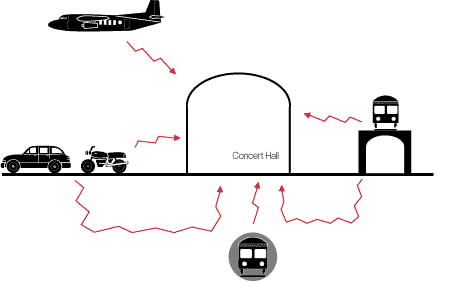Hong Kong researchers have combined simple latex with some plastic buttons to create metamaterial panels that can stop sound waves very effectively, according to New Scientist. The reflected sound waves include low-frequency bass sounds that typically manage to sneak through the walls.
Thick pieces of certain materials, such as the commonly used foam, can typically absorb or reflect sounds, but creating a thin soundproofing material that can block low-frequency sounds has proven extremely difficult. For instance, a thin latex membrane by itself cannot resonate at the right frequency to either absorb or reflect the bass rumble of a jet taking off.
The team at the Hong Kong University of Science and Technology in Kowloon managed to solve the problem by creating a “membrane-type acoustic metamaterial with negative dynamic mass” that combines latex and plastic buttons. Each soundproofing panel consists of latex stretched over a 3mm-thick rigid plastic grid of squares, with a small weighted plastic button sitting in the middle of each square.
Sound waves that hit the panel cause the latex membrane and weighted buttons to resonate at different frequencies that cancel out the sound waves. Individual membranes are tuned based on the weight of the plastic buttons, so that each can cancel out a certain frequency band of sound waves.
Stacking five differently-tuned membranes together can produce a soundproof panel that works from 70 to 550 hertz, and is just slightly thicker than a ceramic bathroom tile. At least one independent researcher envisions such tiles seeing use at airports or other noisy environments — and we’re not saying that your home doesn’t count. We’re also not saying that soundproofing will discourage your neighbors’ robotic drum circle.
[via New Scientist]









